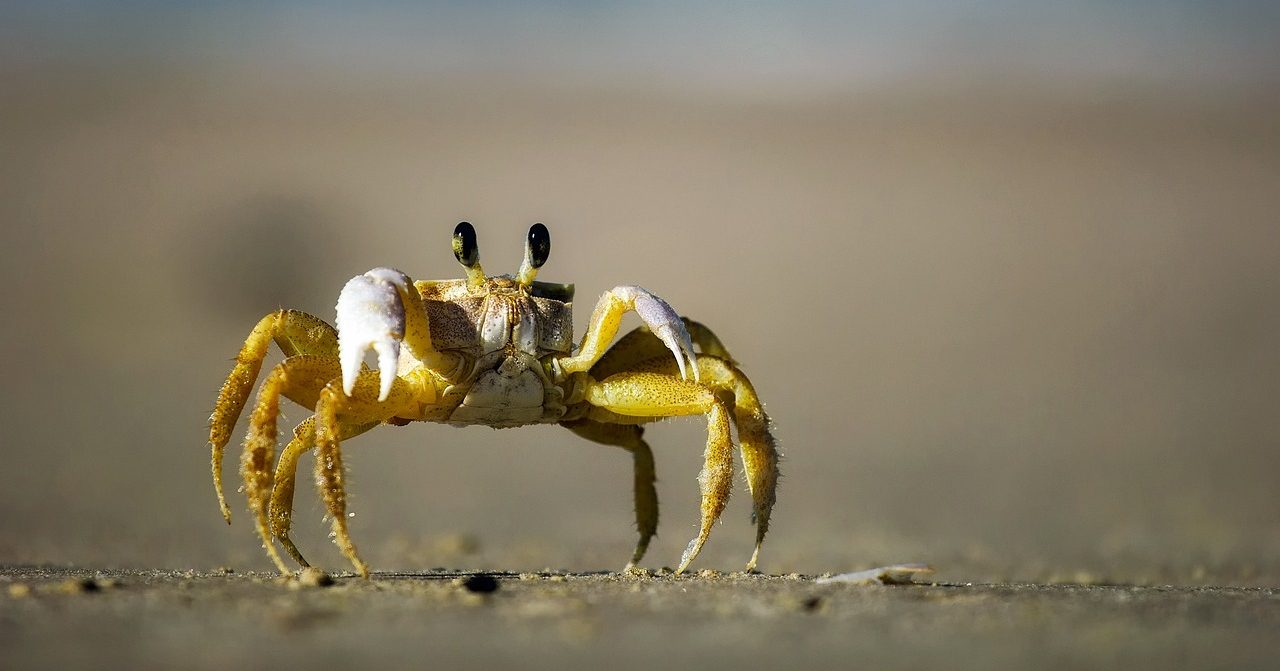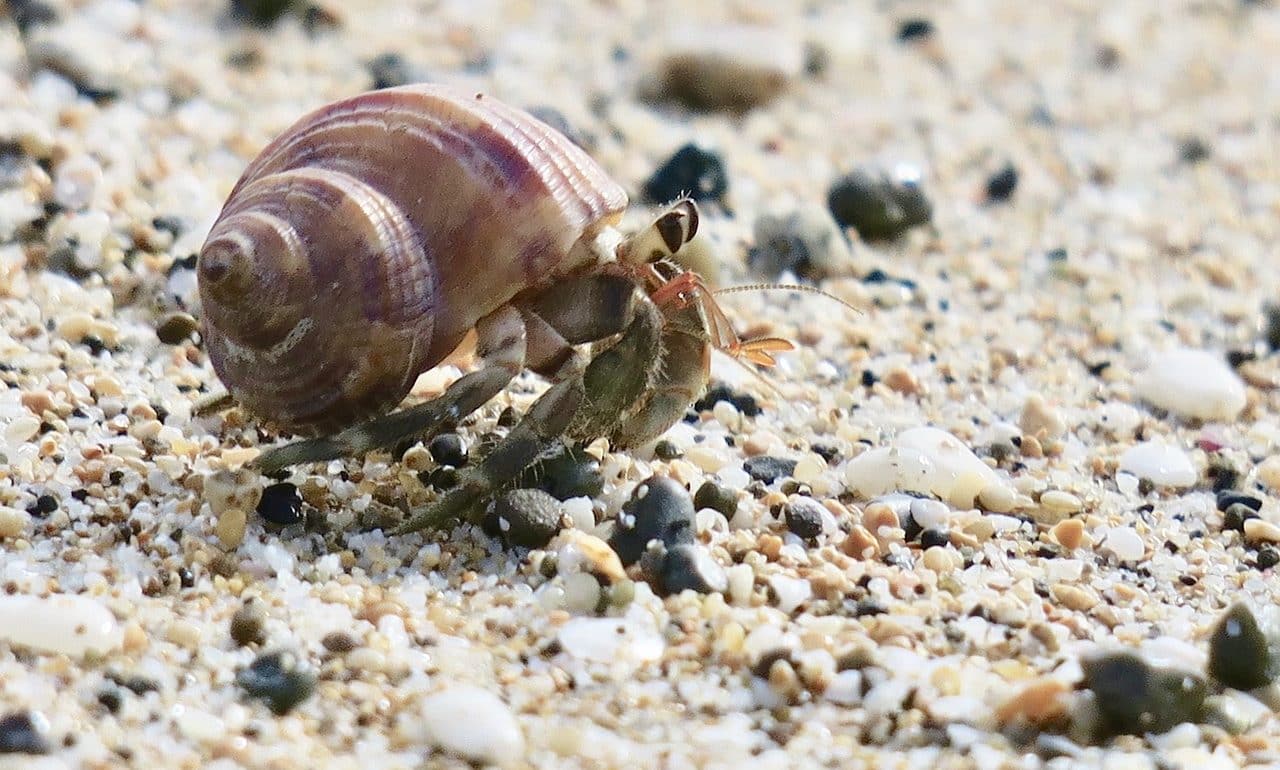
A crab is an arthropod crustacean.
A crab is a crustacean and arthropod animal that belongs to the order of decapods . To know its main characteristics, as you can see, it is necessary to define several terms.
An arthropod is an invertebrate being whose body has bilateral symmetry , is made up of several segments, has appendages with articulated parts and has a cuticle as a covering. In this group we can find crustaceans : animals that breathe through gills and have appendages, antennas and a calcified shell . Decapods , on the other hand, are crustaceans that have ten legs.
Characteristics of crabs
Crabs, therefore, are ten-legged animals with a calcified shell, antennae and appendages that develop gill respiration. Thanks to their pincers they can fight other animals and manipulate food.
There are about four thousand species of crabs: beyond the differences, they all share the peculiarity of living in or near water . Crabs, however, are not characterized by their ability to swim, but rather they usually walk along the bottom of the body of water.
It should be noted that the crab is an edible animal. One of the most popular dishes is crab soup , which can be made with the whole body or with the meat of the crustacean.

Hermit crabs take advantage of the shell of snails to protect themselves.
The hermit
Hermit crabs are very popular, thanks to the fact that they use snail shells to cover their abdomen, made up of a less rigid tissue than that of other crabs, and thus protect it. Its scientific name is paguroid, and it is a superfamily (the Paguroidea ) of crustaceans that have ten legs.
The type of relationship that the hermit crab maintains with the shells of other mollusks is called thanatochresis and there are not many species that practice it. It is important to note that the crab does not kill to obtain the shell, but rather takes it from the corpses. There are approximately 500 species of paguroid worldwide and almost all of them are aquatic.
The front part of the hermit crab exhibits a rigid exoskeleton, which is why it only needs to increase the protection of its rear part. To facilitate the task of getting inside a foreign shell, its abdomen is coiled in a spiral shape and its extremities cover the gaps to prevent other animals from sneaking in.
As expected, the hermit crab must change its shell more than once in its life, as a consequence of its natural growth. The selection process is meticulous: you do not settle for just any house , but rather you approach those that interest you and inspect them carefully using your tweezers until you find the one you like the most; At that moment, he proceeds to carry out the move as quickly as possible, since every second outside is in great danger.
Since not having a shell to protect its abdomen is practically surrendering to certain death, the hermit crab cannot allow another to snatch a shell from it if it is the only one it has found; For this reason, it is very common for him to confront his opponents by force.
Regarding food, the hermit crab is mainly a scavenger, although it also feeds on plants, larvae, small crustaceans, mussels, snails and worms if necessary.
Other meanings of the term crab
The crab concept is also used in other ways. In the field of nautical , a crab is called a perch that, with a semicircular mouth at one end, adjusts to the pole to rotate around it.
In armor , the crab is the piece made up of sheets to protect those sectors of the body that need to flex.
